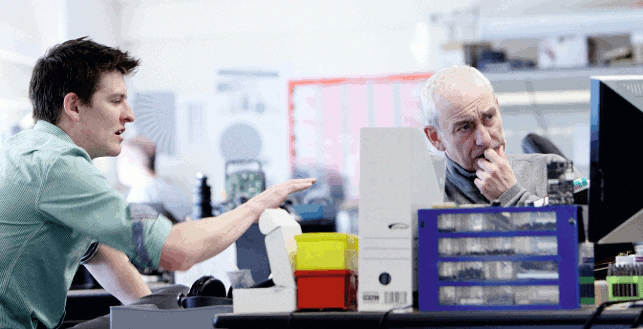Despite the public perception of ‘actors prancing around clad in ping-pong ball-encrusted jumpsuits’, motion capture technology also has a more serious side.
The Vicon Cara headset captures the expressions of its wearer, allowing the data to be transferred to an animated character
It’s as important to helping you getting into your car in the morning as it is to Hollywood blockbusters; it assists you in taking laundry out of your washing machine, and helps children to walk. At its root the technology is about capturing the accurate measurement of how people are moving.
At the forefront of the technology for three decades, Vicon has seen first hand how its products and software have permeated industries far removed from its medical origins.
Beginning 30 years ago as one of Oxford’s life sciences start-ups, its camera technology was used to analyse the walking movement of children with cerebral palsy, informing surgical decisions to help sufferers to walk. Today Vicon’s systems are used in a variety of industries including life sciences, entertainment and engineering.
Engineering customers are driving the use of virtual reality systems, for which motion capture is used to track the head movements of the viewer.

To help immerse the user in virtual product assessments Vicon has also partnered with Autodesk and Dassault Systèmes, working with their VRED and 3DXcite visualisation software, respectively.
Combining the hardware and software elements to reduce latency, designers can realistically walk around rendered 3D CAD models and make accurate judgements on styling and engineering decisions.
Vicon cara headset
Given the expansive, global use of its technology, it’s interesting to learn that the company’s hardware development, testing and assembly still remain in its Oxford headquarters.
Vicon has worked closely with design agencies on projects. For instance, the initial design of its latest product, Cara, was subcontracted to London-based product designers Curventa.
A wearable headset, Cara has four cameras facing the wearer, set to capture their expressions to be then transferred to an animated character in visual effects software.

While Curventa worked on the product fit and aesthetics, it was up to Vicon’s team to house the proprietary internal electronics. With both parties using SolidWorks the process was made easier, allowing Vicon to apply the system’s electrics using CircuitWorks within the CAD package.
“A lot of the PCB components can cause clashes later down the line, whereas this gives us the scope to spot this early on,” explains Vicon hardware development manager David Reynolds.
A prototype was then built for testing, using it to try on as many heads of as many different shapes and sizes as possible, and trying to recreate real world user cases.
Once the design was reasonably comfortable, new prototypes were sent for testing with customers, to be used with real actors, before full production.
All under one roof
Twelve months ago the decision was taken to move more of the product design and prototyping process in-house, looking to not simply shave off time, but chip it off in blocks.

“We’d have a prototyping bureau 3D print a model which would take a week or so; then get it machined in metal, which is a significant amount of money, and a month again to get those parts in,” says Reynolds, looking back.
“The tooling itself is 10 to 14 weeks of development. So the whole thing is long and expensive.” Where they had used an external bureau for SLS and SLA prints, a new Stratasys Uprint desktop 3D printer was bought in.
For fit and functionality it proved perfect for having models ready for testing within a few hours.
“Some of the processes we use such as die-casting, we’ll struggle to get tighter tolerances than [the Uprint resolution] anyway, so it’s about right really for our application,” offers Reynolds.
For metals prototyping, the team look to UK-based supplier Protolabs for a three to five-day turnaround, or suppliers in China that could provide them in a couple of weeks.
Protolabs was also chosen for its plastics injection moulding process, because its aluminium tooling rather than steel makes it faster – turning parts around for Vicon in under two weeks.
Suddenly, from taking months to develop a product ready for testing, the process is down to a few weeks. “It saves time and the final product is better because we can iterate so many times,” says Reynolds.
“You can keep correcting and you tend to get it right much sooner because of this.”

Manufacturing is predominantly done in China, however some parts are produced closer to home, with the same motives as with the prototyping: if it’s closer to home it’s faster to fix if something goes wrong.
The finished parts are put together in Oxford by a team of ten responsible for assembly, testing, and fixing any problems.
“The fact that we’re a flight of stairs away from the people that are manufacturing it makes a massive difference, because there’s no hiding from your design decisions!” says Reynolds, admitting that all this information feeds back into Vicon’s new leaner design process, much to the benefit of all its end clients.






